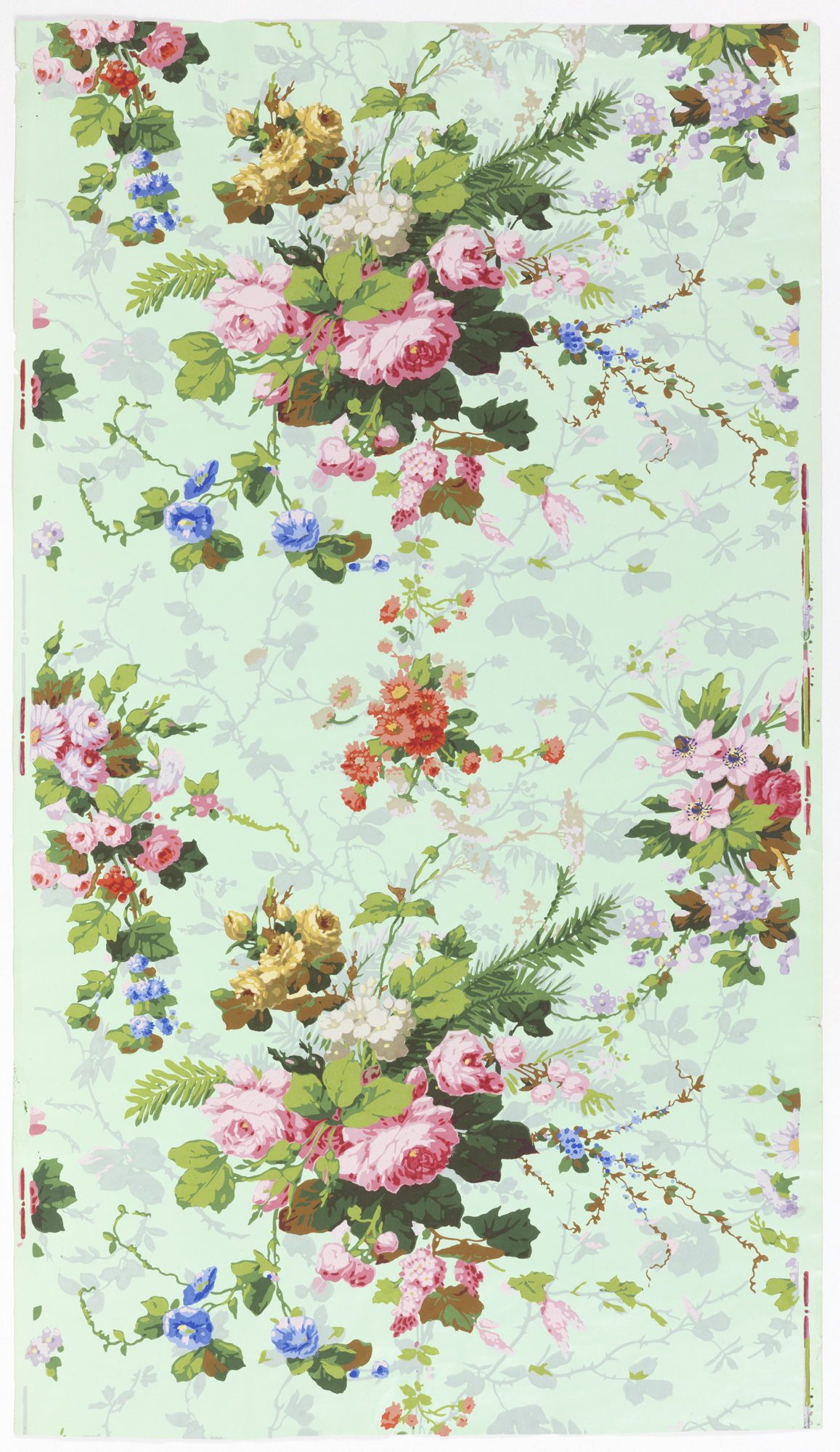This lovely sidewall is an exceptional example of the art and craft of wallpaper. Made in France during the mid-nineteenth century, it was block printed on handmade paper, and represents the high end of Victorian wallpaper production. Bouquets of pale pink and yellow roses tumble down a satin, mint-green background along with blue morning glories, peach-colored blossoms and tiny buds in lilac and lavender. Pale grey shadows of vining flowers create a nice secondary pattern that gives the design more depth. To successfully achieve this impressively realistic and three-dimensional look, the design was printed with approximately twenty-two different colors. Each of the flowers required five to six different shades of the color to create this degree of realism. This means the manufacturers had to carve at least twenty-two separate blocks and exactingly align each one to properly produce the image.
As wallpaper manufacture was elevated to an art form in the late eighteenth century, highly naturalistic patterns gained precedence over earlier, more rigid floral papers derived from textile design. Even with the growing popularity of the British Reform movement beginning in the 1840s which promoted two-dimensional designs for wallpaper, the demand for these realistically rendered floral papers continued. An increased interest in horticulture upped the demand for floral wallpapers, by far the largest category of wallpaper designs. As illustrated by this particular sidewall, roses were a popular choice of subject in naturalistic papers. The inspiration came from the many hobbyist and professional gardeners that were constantly creating new and interesting varieties of roses. Dahlias and hydrangeas were also favorite subjects. Whatever the species or variety, wallpaper designers made sure to depict every blossom at the height of its glory, allowing homeowners the luxury of a perennially perfect garden that flourished indoors.
See this work on view beginning December 12 in the Immersion Room, an opening exhibition that features selected wallcoverings projected onto the walls at full scale and an interactive design table where visitors can create their own.
Anna Rasche is a student in the History of Decorative Arts & Design graduate Program at the Cooper Hewitt, and is a Master’s Fellow in the Wallcoverings Department.
